Nick Jonas Midway
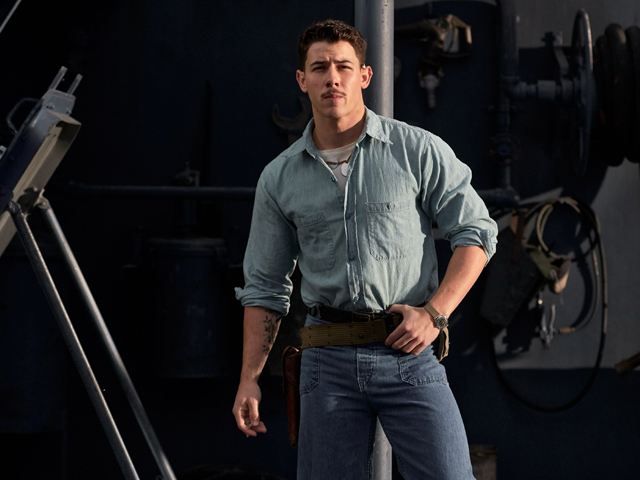
The Story of the Battle of Midway
Cast: Luke Evans, Woody Harrelson, Ed Skrein, Aaron Eckhart, Patrick Wilson, Dennis Quaid, Mandy Moore, Tadanobu Asano, Nick Jonas
Director: Roland Emmerich
Genre: Action, Drama
Running Time: 138 minutes
Synopsis: Midway centers on the Battle of Midway, a clash between the American fleet and the Imperial Japanese Navy which marked a pivotal turning point in the Pacific Theater during WWII. The film, based on the real-life events of this heroic feat, tells the story of the leaders and sailors who used their instincts, fortitude and bravery to overcome the odds.
Midway
Release Date: January 30th, 2020
About The Production
"You could ask, how could I fly against these odds, knowing that I probably wasn't going to come back. Those men were my brothers. I would have flown with them straight into hell.
- Dick Best
Midway centers on the Battle of Midway, a clash between the American fleet and Imperial Japanese Navy, which marked a turning point in the Pacific Theater during World War II. The film, based on the real-life events of this heroic feat, tells the story of the leaders and soldiers who used their instincts, fortitude and bravery to overcome the odds. It's a real-life story of brotherhood and camaraderie, and the determination and sacrifice of real-life military heroes, to secure an American victory.
Having been decimated by the Japanese attack on Pearl Harbor only six months earlier, the U.S. Navy was desperately outmanned and outgunned heading into the Battle of Midway. The U.S. military held on to one great advantage: its intelligence operations and collective grit, were strongly underestimated. Midway takes audiences deep inside the complex decisionmaking of the United States' tactical command – and then straps them inside a bomber cockpit to experience the most visceral on-screen telling, of the greatest battle in U.S. warfare history.
Midway director Roland Emmerich is a master of cinematic spectacle, with a legendary career ranging from science fiction blockbusters, like Independence Day, to historical epics, like The Patriot. In addition to his signature scope and scale, the acclaimed filmmaker's work is always grounded in relatable themes, fully realized characters, and the emotional power of hope. Midway continues in this proud tradition, and is a true passion project almost twenty years in the making. "I'm thrilled that we had the opportunity to tell this story, because young people today don't always know the stories about those who fought for their freedom," he says.
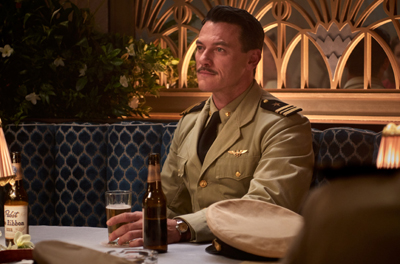 "I think that without the generation who fought in WWII, our world would be very different. There was a lot of hardship and a lot of people died for it, but they died for a reason. There was a real fight against fascism going on in the world. Today we sometimes forget about these things, but movies can serve as a vivid monument to them. We wanted to honor that fight and those who gave so much."
"I think that without the generation who fought in WWII, our world would be very different. There was a lot of hardship and a lot of people died for it, but they died for a reason. There was a real fight against fascism going on in the world. Today we sometimes forget about these things, but movies can serve as a vivid monument to them. We wanted to honor that fight and those who gave so much."
Emmerich envisioned a fresh look at this pivotal battle told for a new generation, with characters who share powerful bonds. "Our film follows three story lines, depicting three interwoven perspectives on the battle," Emmerich continues. "One is the pilots aboard the aircraft carrier USS Enterprise, mainly Dick Best, Clarence Dickinson, and Bruno Gaido, who are historical figures. A second storyline follows the critical work of Naval Intelligence officer Edwin Layton; a code breaker, Joseph Rochefort; and Admiral Chester W. Nimitz in Pearl Harbor. The third storyline centers on the Japanese officers, Admiral Isoroku Yamamoto, and Japanese officers Tamon Yamaguchi, Kaku Tomeo and Chūichi Nagumo, who are historical characters, as well."
"The Battle of Midway is one of the most fascinating stories of World War II," says producer Harald Kloser, who has been working with Emmerich for over 15 years. "Midway is the event that transformed the war in the Pacific, basically preserving democracy and freedom in the U.S. and the Western world. This was the day freedom was won."
Executive Producer Marco Shepherd attests that Emmerich has wanted to make Midway for almost two decades. "Roland has been fascinated by the stories behind the men who sacrificed, and risked their lives to fight in this incredible naval battle" he says.
Screenwriter Wes Tooke first discussed Midway with Emmerich while they were collaborating on another project. "Roland mentioned that he'd always been fascinated with the Battle of Midway, which intrigued me because my grandfather had served in the Navy," explains Tooke. "The moment he said that, I wanted to be involved. I've been fascinated since childhood with military history, in particular WWII and the Pacific Theater. The scope of it and the changes that happened over the six-month period between Pearl Harbor and Midway are some of the most compelling events in history. I knew Roland could tell that story in a way it's never been told."
The courage of the young men rising to the challenges of war truly impressed the filmmakers. "What really moved me was the willingness, and the spirit, behind those who suffered from the attack on Pearl Harbor," says Shepherd. "This battle has inspired many other stories, particularly in science fiction, for which Roland is celebrated. You can even see allusions of Independence Day in this film. But most of all, it's about the fight against an idea that was starting to consume the world at the time."
Dennis Quaid, who plays Admiral William "Bull" Halsey, was certain that Emmerich, who had directed him in the blockbuster film The Day After Tomorrow, could deliver the goods on all fronts. "Roland shows audiences what they have never seen before, and does it in a way that makes you believe," he points out. "I knew he would bring the same movie magic and his particular style and mastery to Midway, which is an amazing story."
Unlike science fiction, however, Midway is firmly based in historical facts, which reveal themselves throughout the course of the film. One of the things that made telling this story so compelling for Tooke is how new insight has allowed us to see the battle more clearly and completely.
"There was a huge amount of Japanese military history that had not made it over to the U.S.," he explains. "When we began this project, I was fascinated to discover this wave of new scholarship, where the Japanese side of the story was finally being told in English in a way that it had never been before."
"Roland insisted that we make every effort to make all aspects of the film, as accurate as possible," Tooke continues. "Everything that happens onscreen, in terms of historical events, is factual and in chronological order. It begins in December 1941 with Pearl Harbor and ends in June with the Battle of Midway. It is the most dramatic six months in the history of warfare."
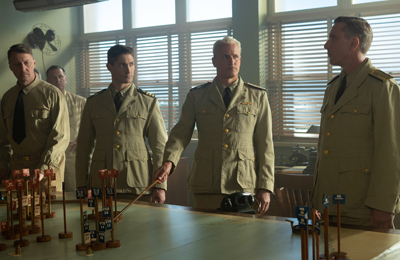 Characters
Characters
Dick Best (Ed Skrein)
Dick Best is the unsung hero of Midway, a tough-as-nails Jersey guy, and a Navy flyboy working his way up the chain of command as WWII unfolds. A natural leader despite a tendency to get short with guys who aren't as daring as he is, Best is a risk-taker whose flying skills are first rate; he is the one to fly with if you want to come back. Best is a true American hero whose exemplary performance, both leading his men and courageously flying his plane during the Midway battle, resulted directly in turning the tide of war.
"There's a real emotional journey for Best," says Ed Skrein, who takes on the role. "You see several versions of Best throughout the story. First, there's the cocky guy who turns off his plane's engine to prove to himself he knew how to land without it. After Pearl Harbor, you see the relentless Best, who's on a one-man mission to win the war. During the war, Best loses some pilot friends, which begins a dark night of the soul for Best, and we see him at his absolute lowest.
"Best only opens up to two people: his wife, Ann, and his closest friend, Clarence Dickinson," Skrein continues. "They help him overcome his losses and we ultimately see a Best with all of his old qualities and emotional literacy and intelligence. He is a true leader of his men."
"Dick Best has been overlooked, in a way," says Kloser. "He was a humble guy, and Midway was his last battle because of an injury sustained while flying. He actually never flew again. In this story, Best stands for all those unsung heroes who fought for our freedom."
Best's relationship with Ann and daughter Barbara was a key element that drew Skrein to the project. "What happened at the Battle of Midway changed the world, but this story is also rooted in a man whose strength and lifeline is his family," he notes. "What really made me excited to join the Midway cast was the duality of that epic scale and intimate emotional narrative."
Edwin Layton (Patrick Wilson)
Edwin Layton is a Lieutenant Commander in the U.S. Navy, whose job was interpreting intelligence information for military strategy. Layton works closely with Admiral Nimitz and a group of brilliant decoders, and soon discovers that the Japanese are planning an offensive on Midway Island. Though Admiral Nimitz, who commands Allied Air, Land and Sea Forces during WWII, has received contradictory intel from the White House, Layton is willing to bet his life, and the lives of countless sailors and aviators that his Midway intelligence is correct. A man who takes his work to heart, Layton spends many long days and sleepless nights in the service of his country.
"Edwin Layton was an extremely accomplished intelligence officer in the United States Navy who happened to have served in Japan, and was fluent in the Japanese language," Tooke explains. "During Pearl Harbor, he was the lead intelligence officer assigned to the commander. He describes the weight that fell upon his shoulders after that intelligence failure and how he felt this obligation to try to make up for what had happened."
"Like many who work in Intelligence, he is very analytical," says Patrick Wilson, who plays Layton. "What I found very interesting about him was that he was known as being dry and quick-witted. I think he knew that and used it to his advantage. When you're talking about Military Intelligence in the 1930s, and eventually the '40s, there were many people who didn't quite understand it because it was all so new. If you worked in Intelligence, you were different from the average soldier or seaman."
Wilson enjoyed learning to speak some Japanese and thinks it reveals much about Layton's character. "Layton was fluent in that language and I think it shows the respect he had for the Japanese people. He knew exactly what he was saying, when he would converse with Admiral Yamamoto, as he does early in the film," Wilson points out. "There's not only a strength but also a globalist point of view when you have someone that's stationed there that can speak with Yamamoto in his native tongue, knowing that Yamamoto speaks English. I've loved learning some Japanese dialogue, and I have great respect for people who act in another language. It's one of the reasons I wanted to do this film."
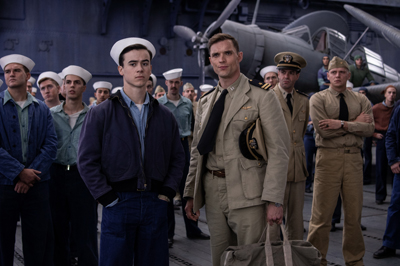 Chester W. Nimitz (Woody Harrelson)
Chester W. Nimitz (Woody Harrelson)
Admiral Chester W. Nimitz is given the position of Commander in Chief, Pacific Ocean Areas, after Pearl Harbor, which a fellow officer calls, "the most difficult job in the world." As Nimitz faces the entrance of the U.S. into World War II, with fronts in Europe and the Pacific, he enlists the help of intelligence officer Edwin Layton to provide him with information so he can "throw a punch" to the Japanese to let them know "what it feels like to be hit." Nimitz winds up working closely with Layton, and despite pushback from the White House, Nimitz takes a chance on Layton's intel regarding Midway Island – a seminal battle that changed the course of World War II.
"Nimitz is an amazing figure in military history," says Tooke. "He was a man who, at the beginning of the Second World War, was coming to a natural end of his career. But after Pearl Harbor, the Navy realized they needed someone who could go out there, reinvigorate everyone and make them realize we can win this war. Nimitz was also an incredibly tough man. Notoriously, once when he was giving a tour of a submarine he gestured and a piece of equipment caught his thumb and tore part of it off. He insisted on finishing the tour before seeking medical attention. There's this iron Texan core to Nimitz that made him the perfect guy to rebuild a shattered Navy after Pearl Harbor."
Harrelson adds, "After Pearl Harbour, there was a lot of pressure on the United States to rebuild these ships quickly, and do what they could to become a power. Admiral Nimitz was the right man for the job. He was a relentless, hard-working, and thoughtful guy who made critical decisions that changed the course the war."
Wade McClusky (Luke Evans)
Wade McClusky is a courageous and tenacious risk-taker, who is in charge of the torpedo and dive bomber pilots on board the USS Enterprise. McClusky briefs the men on their missions, giving them intel on what to expect from the Japanese forces. In the cockpit, McClusky takes big chances that could either pay off, or land him scrubbing potatoes at Leavenworth. McClusky is an outstanding Lieutenant Commander and a true hero who is fully prepared to go back into battle, despite sustaining an injury, until his commanding officer orders him to sick bay. Through his intelligence, courage, and sheer luck, McClusky makes a vital contribution to the victory at Midway.
"McClusky was a squadron commander and a gifted pilot. He decides, on a hunch, to turn and follow this Japanese destroyer that ends up heading back to the main fleet," explains Tooke. "If he had simply followed the route he was supposed to fly, the history of the Pacific War would have been very different."
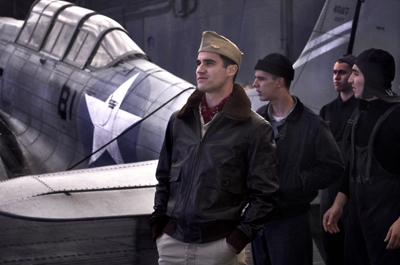 "McClusky is a little older than the pilots he's in charge of," says Luke Evans, who plays the officer. "He's been around longer and experienced much more than they have, and he leads by example. What McClusky does in a pivotal moment in the Battle of Midway makes him one of the heroes of the war.
"McClusky is a little older than the pilots he's in charge of," says Luke Evans, who plays the officer. "He's been around longer and experienced much more than they have, and he leads by example. What McClusky does in a pivotal moment in the Battle of Midway makes him one of the heroes of the war.
"McClusky and his closest friend, Dick Best, find common ground through losing friends and understanding what the other is going through," Evans also notes. "As much as Midway is a film with huge set pieces and big airborne battles, it's also about a brotherhood and the union of these pilots risking their lives on a daily basis."
Jimmy Doolittle (Aaron Eckhart)
Courageous, resourceful, respected and beloved by his men, Doolittle is the leader of an Army bomber squadron. Admiral Halsey – not a big Army fan – thinks Doolittle may be "the best goddamned pilot in the world." Doolittle is planning a mission to attack Japan, which would be a huge psychological blow to the enemy forces, because the Japanese believed their defenses were impregnable. Blown off-course mid-flight, Doolittle winds up bailing over China. Fearing his entire squadron has been lost, he makes his way through the countryside until he's welcomed by a Chinese Major.
Doolittle was a daredevil and like many daredevils, he liked to push all kinds of boundaries. "His personality and his attention to detail were legendary," says Aaron Eckhart, who portrays the legendary military man.
"The Doolittle raid was, militarily, not particularly successful," explains Tooke. "A handful of bombs were dropped but, strategically, it was of massive importance because the Japanese high command had promised both the people and the Emperor that it was impossible to attack Japan. This assault by Doolittle's B-25 bombers proved that they were either incorrect or lying. It was a huge embarrassment that led the Japanese military to decide that the United States carrier fleet had to be neutralized as soon as possible, which led them into the Midway Operation. Also, it was important from a psychological standpoint, both in making America feel like it had finally struck back on some level, and the Japanese people realizing that its high command was not infallible."
"Doolittle and his men knew they wouldn't have the necessary fuel to return to the carrier," Eckhart adds. "There were 72 Doolittle Raiders and they all agreed to go on the mission, despite the incredible odds against its success. Some of them ended up in the sea, many of them crashed, and some died. One team ended up in Russia and had to make its way back."
Eckhart further explains that because of the pre-existing animosity between the Chinese and Japanese, the surviving American pilots were very well received by the former. "When the Chinese military found out who the Doolittle bombers were after they had crashed, and the mission they had just accomplished, they treated them like kings," says Eckhart. "They shepherded many of them through China, and then eventually back to the United States."
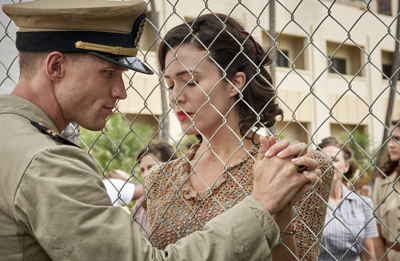 Ann Best (Mandy Moore)
Ann Best (Mandy Moore)
Ann Best is extremely proud of her husband, and is an equal match for her husband's brains and fiery personality. She's also the one with whom he lets down his guard, and shows some vulnerability. Ann joins the other stoic, but worried, Navy wives when their husbands go off on the Midway mission.
"She's strong and courageous," says Mandy Moore, who portrays Ann. "They have a young daughter named Barbara, and Ann is determined to keep her family together at a time when many husbands are encouraging their families to move away from the warfront. Ann and Dick are real partners in their relationship. There's a deep mutual appreciation, and affection for one another."
Moore says she joined Midway because of its unexpected aspects. "This isn't a onedimensional war movie," she explains. "You're not just seeing the heroics of these men. You're getting a slice of their home life, with their families and wives, and a better understanding of what they're fighting for and what's at stake."
According to her onscreen partner, Moore was the perfect choice to embody Ann. "Mandy Moore is a force of nature," says Skrein. "Somehow, she has great power and incredible humility in front of the camera at the same time; it's a wonderful duality. At one point another character tells Ann, 'I've got to tell you, I've often wondered what type of woman would marry Dick Best – and you do not disappoint.' She really is his perfect counterpart."
William "Bull" Halsey (Dennis Quaid)
Admiral William "Bull" Halsey commands the USS Enterprise, an aircraft carrier stationed in Pearl Harbor. As Halsey deals with the aftermath of the Pearl Harbor attack and the encroachment of the Japanese in the Pacific, he's faced with the challenge of the U.S. forces being outnumbered by Japan. He's a stalwart leader who's not afraid to do what's necessary to get his best men in to do the job that's required. Although Halsey is ill, he insists on continuing to work, until he's ordered into the hospital by Nimitz.
Dennis Quaid, who portrays Halsey, is a history buff with a personal connection to the Battle of Midway. "My dad was in WWII, in the Merchant Marines, in the Atlantic," offers Quaid. Moreover, "The father of my friend, T Bone Burnett, was on the Enterprise with Admiral Halsey, from Pearl Harbor all the way through to the end of the war. So, there's a personal connection there, not only to Midway but also to the Enterprise."
"Halsey was no fan of the Army brass and was known for taking matters into his own hands," Quaid continues. "He had his own style, and was brash. But his connection with his men made him a great leader, particularly of so many inexperienced and young men, some of whom were little more than boys. They looked at Halsey as a father figure who was going to get them through this."
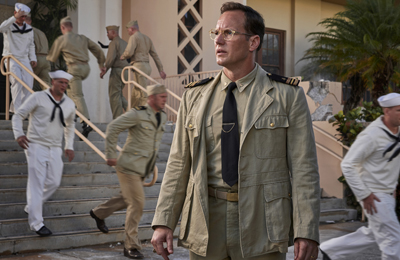 Bruno Gaido (Nick Jonas)
Bruno Gaido (Nick Jonas)
Bruno Gaido, a Naval radioman, is extremely brave, and very confident about it. He catches the attention of Admiral Halsey through an act of astonishing courage on a carrier, prompting Halsey to promote him immediately. During the Battle of Midway, Gaido is forced to bail from his plane and winds up on the deck of a Japanese destroyer.
"I have an affinity for stories with a focus on brotherhood and camaraderie," says Nick Jonas, who plays Gaido. "Maybe that's because I am close to my brothers and understand the dynamic in that relationship. I wanted to do justice to Bruno because he was a real American hero."
Jonas also felt a connection to the character through his own family. "A really important moment for me was when I put the costume on," says Jonas. "I thought back to pictures of my grandfather, who served in the military, and immediately sent a picture of me in costume to my grandmother.
"What also drew me to this story was that it provided the opportunity to learn so much about this battle and the men who fought it," Jonas continues. "There's also an important and compelling human story that follows many characters. Roland Emmerich brings all that to life in an amazing way. He reveals different stories and perspectives within one through line, and it really is incredible."
Isoroku Yamamoto (Etsushi Toyokawa)
Admiral Isoroku Yamamoto is a Japanese Marshal Admiral and Commander In Chief of the Combined Fleet during World War II. A graduate of Harvard and Oxford, Yamamoto is fully cognizant of his country's position in the world, especially Japan's relationship with the U.S., which supplies 80 percent of Japan's oil, and almost as much of its scrap metal. A moderate who doesn't want to be pushed into war with what he describes as the American sleeping giant, Yamamoto ultimately finds himself and his country in exactly that position. Yamamoto works closely with Rear Admiral Tamon Yamaguchi and is instrumental in the Midway operation. Like Yamaguchi, Yamamoto feels stymied by his unimaginative and dull superior officer, Admiral Nagumo. In time, Yamamoto witnesses the disaster of the Midway plan.
Actor Etsushi Toyokawa embraced the chance to explore the role's many facets.
"Yamamoto had opportunities to live and work overseas, which was rare in Japan back then, and he was a very Americanized man," he explains. "There's an important scene in the movie where Layton and Yamamoto talk for the first time. They understand each other's position, since Layton was an attaché and Yamamoto used to be one. Both were against the idea of a war between Japan and America."
As part of his research, Etsushi read several biographies about Yamamoto and watched rare documentary films about him. "I learned Yamamoto knew America well, and believed there was no chance to easily win a war with it. That's why the first action he took was to attack Pearl Harbor. After Pearl Harbor, the Battle of Midway was a big turning point; Japan may have won the war if it won at Midway."
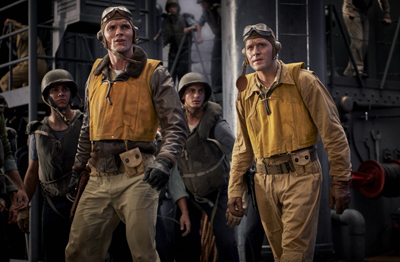 Tamon Yamaguchi (Tadanobu Asano)
Tamon Yamaguchi (Tadanobu Asano)
Rear Admiral Tamon Yamaguchi is a fiery and brilliant rising star in Japan's Imperial Navy. He's very smart, and contemptuous of the conservative Admiral Nagumo. Rear Admiral Yamaguchi works closely with Admiral Yamamoto, whose first mission after Pearl Harbor is to destroy the American fleet. Yamaguchi is one of the architects of the Japanese Midway offensive, and is pleased when Yamamoto gives him the go-ahead to start drawing up plans for the operation. As the Americans get wind of the Midway plan and launch a preemptive attack on the Japanese forces, Yamaguchi can only watch in horror as his own fleet is decimated. A courageous and dignified man to the last, he goes down with his ship.
Says Tadanobu Asano, who plays the character: "Tamon was a very powerful and energetic man, and the more I researched him, the more I was drawn to him. Tamon had a samurai spirit and I suspect he decided that Midway should be where he died in case his mission didn't go as well as he had planned. This is all very intense; it would have been a tremendous amount of pressure for anyone in his shoes, but I thought he must have processed this whole thing a little differently. I thought he wouldn't be feeling that much pressure because he had already made peace with his belief and he was sticking with it."
Clarence Dickinson (Luke Kleintank)
Lieutenant Clarence Dickinson is a courageous, highly skilled dive bomber pilot, who almost died during the Pearl Harbor attack but lived to fight another day. He's a good friend of Dick Best, with whom he flies in formation. Though Best is frustrated with his own lack of advancement, Dickinson understands what's holding Best back from being in command: an obsessive pursuit of perfection from himself and everyone around him. A seasoned pilot who doesn't like the odds of the upcoming Midway mission, Dickinson proves to be as fearless, focused, and effective as any hero of WWII.
The role had a personal resonance for actor Luke Kleintank. "My grandfather was in these battles and he served on the submarine the Archer Fish, went up against the Japanese aircraft carrier Shinano," he explains. "This is in my family – my uncles are all lifers in the Navy." To prepare for the role, Kleintank watched John Ford's 1942 Academy Award®-winning documentary The Battle of Midway, he also visited Dickinson's grave in Hawaii to pay his respects.
"Clarence Dickinson's legacy is that of a man who changed the course of history. He's a hero," Kleintank sums up.
Eugene Lindsey (Darren Criss)
The commander of the fighter plane Torpedo Six, Eugene Lindsey is Dick Best's superior officer, and he doesn't appreciate Best's annoying habit of criticizing his pilots for being too slow, and challenging orders mid-operation. But Lindsey is a courageous officer who earns Best's respect by leading his squadron, despite being injured in combat.
"He's a career Navy man," explains Darren Criss, who takes on the role and coincidentally attended Lindsey's alma mater, the University of Michigan. "Lindsey did several tours and was stationed in various places in the United States. He did a post-graduate degree in aeronautical engineering at MIT, when he was in his 30s. By the time we meet Lindsey in this film, he's had a pretty storied life of being a man of the sea and a pilot."
Lindsey was tough and determined. "He would go on to fly during the Battle of Midway, even after crashing and being injured," explains Criss. "That kind of courage is pretty extraordinary and inspired a lot of these men at this point in the war. They were fueled by this very raw sense of retribution that needed to be gained after something as devastating as Pearl Harbor."
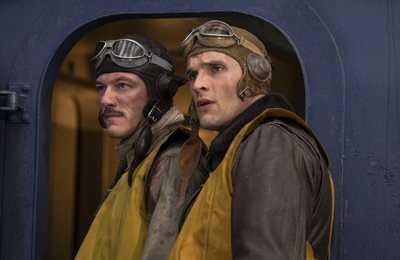 James Murray (Keean Johnson)
James Murray (Keean Johnson)
James Murray's laconic North Carolina drawl frequently belies the terror he feels flying as Dick Best's radioman. Murray doesn't have the same "damn the torpedoes" mentality as Best; he's frequently worn to a frazzle flying with the relentlessly risk-taking pilot. But Murray perseveres to fly with him because he knows that with Best's skills in the cockpit, he has the greatest chance of making it home. As the Battle of Midway progresses, Murray's nerves go to pieces, and he asks Best to turn back. Exhausted and demoralized by the thought of going once more into battle, Murray receives an honest pep talk from Best, igniting his own heroism. "Murray is Dick Best's rear gunner and radioman," says Keean Johnson, who portrays Murray. "He's juggling two jobs at the same time while being shot at by Japanese planes. Murray basically shoots at the enemy pilots and gives Dick Best the information he needs to safely find and destroy oncoming aircraft carriers and get home safely. He's not into being a daredevil. Murray wants to do exactly what's in the rulebook and stick to that."
"Murray's an introvert and just wants to do his job," Johnson continues. "He's not looking to win a medal, he's just looking to do his time, to fight for this cause but not sacrifice himself. In the end he learns that he actually would die for his country and sees many of his friends perish. He definitely learns not to take it for granted."
The Making Of
The journey to bring Midway to the big screen began in November 2016. "It started with Roland daydreaming about this film, telling stories, and talking about what movie he'd like to make," says production designer Kirk M. Petruccelli, a frequent Emmerich collaborator. "I visited Montreal with him over the course of several different phases of the project to talk with researchers, my art department, and my set decorating teams to start to figure out what it would take to bring the project to life. Then, Roland pulled the trigger, and said, 'We're making this movie.' In about ten weeks, we had all the reference material and research in order, and the set designers started to work."
In addition, Petruccelli traveled to the Naval Archives and National Archives, in Washington, D.C., to get as much data, architectural cartography, and imagery as possible. "That started a process of research for my team, which learned every detail needed to build a battleship and an aircraft carrier as authentically as possible," he says.
Another key resource was the U.S. Government itself. "If you do a movie that involves the military, the first thing you do is ring up the press department of the Department of Defense," producer Harald Kloser continues. "They liked our script because it tells a compelling story about an historic battle. We received a lot of support and were allowed to shoot in locations that were otherwise unavailable, like the submarine USS Bowfin, as well as facilities on Ford Island and Pearl Harbor. We're very thankful to the DoD."
"We were lucky enough to shoot at Hawaii's Hickam Air Force Base, in an old abandoned home that they brought to life again, as well as Ford Island," confirms Mandy Moore. "It felt like you were back in the early 1940s. Shooting at these historical locations, where families actually lived during WWII, brings a level of authenticity. It helps you feel grounded, and puts yourself in your character's shoes."
The filmmakers couldn't shoot entirely on location in Hawaii for logistical reasons, but they made sure that the sets on the soundstage and on location in Montreal were as authentic as possible. "If you shoot a period film it means you have to either find locations that are period or build them," Kloser explains. "We had to build many of the sets because they don't exist anymore or were too far away to move everybody there."
"All of these spaces are exact reproductions of what existed," adds Petruccelli. "It's actually the scale of the mess cabin on the Hornet, Enterprise, and Yorktown. The flight deck is an exact, inch per inch relative reproduction. We had to reduce the size of the aircraft carrier deck by a few feet because we couldn't fit it on the stage, but the planes and carrier are exact matches."
Two different kinds of American warplanes were also recreated for Midway: the SBD Dauntless and the TBD Devastator. "The TBD doesn't exist anywhere else. We have the only one on the planet right now, located outside Truk Lagoon," says Petruccelli. "We ended up looking through blogs and going through models and any text or work we could find, to learn how this plane was actually built. We found the ribbing of it and built it to the T. It's an honor to have it and it's a museum quality build."
There are five SBDs in existence, but using an original one posed formidable challenges. "We traveled to Vancouver to meet with a great group of artists to build both the SBD bombers and the TBD Devastator," Petruccelli continues. "We wanted it to be movable, easy to use, able to be disassembled, and have active guns, engine and an exhaust. It had to be hyper-realistic. It took them about nine weeks to put the two together. They shipped them across the country in pieces and we finished the interior, and some of the exterior paint work and scenic art, in Montreal."
It was also a challenge to capture scenes set on the USS Enterprise, the most decorated ship of World War II, and which was present at almost every major battle of the Pacific Theater. The ship had an incredible legacy but was tragically scrapped in the 1950s, and only her bell remains.
"The first idea was to do it on a real aircraft carrier but we realised that wasn't possible for many reasons," says Emmerich, explaining that the light was wrong and it was impossible to filter out the surrounding encroachments of modernity. So, the production reverted to its original idea to shoot it on a soundstage, surrounded by blue screen walls.
"We went through a list of effects that were most important to myself and to Roland," says special effects supervisor Guillaume Murray. "Roland wanted to see those guns and see them fire. The large winds we needed to create on the flight decks to depict the effect of the Pacific Ocean were also very important to him, as were the dirtiness and nastiness of the elements – the guns, ships, mist and rain – all of which make it look uncomfortable to be on those aircraft carriers back then."
Adding to the realism, but also the complexity, was the fact that Emmerich wanted the actors to do their own stunts. Says stunt coordinator Patrick Kerton: "Roland wasn't interested in using stunt doubles, so he wanted to make sure that I was able to design and fulfill all those needs. I only had about 20 stunt performers working, and the actors were basically able to do all their own stunts – everything I asked for."
"The carrier set was very immersive, and the wind machines really hurled you around," describes Skrein. "You needed to scream and shout to be heard, even when people were next to you. Add that to that the sounds of the heavy artillery – it was unbelievable. You don't have to imagine too much. You can feel the power of the guns going off in your chest and in your bones."
Many of the weapons needed for the movie no longer existed. "All the anti-aircraft artillery was thrown off the boats in 1942," says Murray. "We had to recreate those, so we rebuilt the guns by scanning museum parts and finding existing plans that were dated, and made them fire with different gases that would simulate the gunfire and recoil effects. We found part of a Chicago piano gun in North Carolina and went down there and scanned the gun itself, or what's left of it, and then found, in the same ship, the original blueprints of the gun. That provided the proper dimensions, shapes and sizes that we could recreate with machining and different fabrication methods." 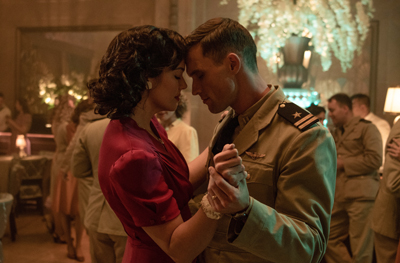 The gunfire had to be realistic but safe. "It's a mix of oxygen and propane that's detonated by a spark at a precise timing," explains Murray about the practical effect. "That creates an explosion that comes out of a combustion chamber and simulates the gunfire of these large caliber anti-aircraft guns."
The gunfire had to be realistic but safe. "It's a mix of oxygen and propane that's detonated by a spark at a precise timing," explains Murray about the practical effect. "That creates an explosion that comes out of a combustion chamber and simulates the gunfire of these large caliber anti-aircraft guns."
The SFX and stunt teams worked hand in hand to bring art and action together for maximum impact, such as a scene depicting some heroic torpedo wrangling. "A real-life figure named Slim Townsend stops a moving torpedo that's been dislodged off one of the aircrafts on the USS Enterprise," Kerton describes. "I found a stunt performer, Tyler Hall, the same age as Slim was at the time. Running a torpedo is challenging because it's a solid object, it's moving at a rapid pace, and there's nothing to really grip on to."
But Gaido's big moment comes when he shoots down an incoming kamikaze pilot from a plane on the deck of the Enterprise. "The actual stunt is Nick running across the aircraft carrier, jumping up on the wing, jumping into the plane, getting that big Gatling gun out, and opening up on this plane that's trying to bomb the carrier," says Kerton.
"When Bruno takes down the kamikaze heading for the Enterprise we had to cut the airplane in two," says Murray. "We took it apart and then dropped it on its tail. That allowed us to create the effect that the plane Bruno was sitting in, and using as a weapon, was cut in half by the crashing Japanese Zero. Bruno would jump in the airplane and shoot down the kamikaze but the kamikaze's plane would cut the tail end off of Bruno's plane and spin it around. We did that in a few parts and it worked out very well."
"We took an additional step by animating rather than just simply placing props where we need the actors to look," says Shulz. "Because we were on an aircraft carrier, we would need to see an aircraft take off or land – or crash. Those animations had to be timed, and the actors needed to learn those timings for them to react properly."
A three-axis gimbal enabled the filmmakers to create movement to help the simulation of the flying of those airplanes. "We had a steel structure that allowed us to rotate the whole airplane, to bank and tilt it forward," Murray explains. "These axes are controlled with hydraulic motors and ramps, which are in turn controlled by a computer. That let us provide accurate movements, which we could repeat."
The experts also stepped in to make sure the actors knew what to do in the cockpit. "We had a pilot technician that really knows those aircraft," notes Kerton. "They had to coach the actors on how to move and react with respect to the g-forces with every type of maneuver of the aircraft."
"In the SPD planes we had dials, switches, and radio gear," says Keean Johnson. "We had radios to talk to each other and throat mikes – all this attention to detail that audiences might not pick up on but were important to us. Being able to start a scene with flipping switches and feeling like you're actually starting this machine, instead of just miming that, helps so much."
The art department's voluminous research provided the nuts and bolts underlying the realism of the builds and effects. "The hardware that we use today wasn't used back then," says Murray. "So, all the screws, bolts and nuts were different and hard to find. We put together torpedoes, airplanes and guns with flat-head screws that don't exist anymore. We built some of those to make them look right on camera and in period. It was a challenge but the art department did great research."
That attention to detail is similarly evident in the scenes set in Japan. "I could tell they researched Japanese art and culture," says Etsushi Toyokawa. Set Decorator Carolyn Louckes says this intercultural respect sets Midway apart from other films about the war. "We start the film from the Japanese perspective. It introduces you to a world of culture, honor, and respect. We had an industrial tone for the scenes with the American characters, and then this old world, a more traditional view that you can see in the richness of the colors of the Japanese ships.
"The Japanese were still in ships that were originally from World War I," Louckes continues. "They still had a lot of wood components. Even on the bridge they had real cabinetry. It made for a lot of brass and mahogany, and warmth, right down to the white gloves worn by the officers. It's about the beauty of their ships. The Americans didn't think about their ships as being beautiful, that way."
Set design was also important for establishing the lives of the code breakers. "They were in the basement, using the best technology at the time, which was the IBM. They'd be smoking, staying up late, trying to break these reports and obscure radio messages that would come from stations on the north of Oahu at the end of the day," explains Louckes. "The place was freezing cold because they were trying to keep the IBM machines cooled in the Hawaiian heat. They had rickety air conditioning going on and you see all the guys wearing sweaters because they're freezing, the ashtrays piling up, the coffee rings on the coffee mugs."
Costume Designer Mario Davignon used historical photos for research and inspiration. He also worked closely with several consultants, including Harlan Glenn, who has written five books on historical military history and attire.
"We spent several months researching all the characters in depth, what they did and wore," says Glenn. What you see is a cavalcade of naval fashion: When we're in Washington, D.C., we used navy dress blues; with a medal presentation aboard the Enterprise, it's all about working khaki uniforms. It was Admiral Halsey who said that if you report in your dress whites it told him that you're not ready to work, but if you show up in your khakis he knew you were ready. You'll see a lot of the classic WWII Navy shirts, dungaree pants – the classic crackerjack look, as they used to call it."
Davignon says attention to detail was of the utmost importance. "In the military, clothing changed periodically so we worked with the 1941 Navy regulations, because this piece or a short sleeve will appear six months later," he notes. "It was important to show that it's the beginning of the war, so there's still a feeling of the 1930s."
"The clothing is utilitarian," says Kleintank "The material's a little thicker. The hats they wore when they're flying look a little like swimming caps. The flight suit's pockets are on the knees so that when you're flying you can put your stuff in your pocket. That level of detail is pretty cool."
"We wore a life jacket, an absolutely badass leather jacket, and leather gloves," adds Skrein, "along with a khaki shirt, a gun belt, knife, pack with ammunition, hat and goggles, and radio pack. If there weren't wind machines always going on set, I'd have been getting very hot!"
Many of the central characters additionally got some special accessories that reflected their character's personality. "We added a little flair for Lt. Commander Lindsey – a scarf to give him a little pizzazz," says Criss. "Since the men on the ship called him Errol Flynn, that seemed appropriate."
Evans adds: "I was very lucky to have been given some real wings from WWII, which felt very special. I could appreciate the fact that this was on another man's chest at one point. It moved me and reminded me of the responsibility of playing and representing a great man."
That points to the film's themes of loyalty, brotherhood, sacrifice and bravery – all of which transcend generations. While Roland Emmerich is renowned for the scale and spectacle he has brought to the big screen, he has also always delivered a relatable emotion to the stories he's telling. "Roland captures both the huge scope and devastation of these battles, while revealing the human story underneath it all," says Tooke. "Midway is a true epic and it's told at a certain level of scope that's now become common in superhero and science fiction films," Tooke continues. "This picture uses those bigger-than-life elements in a way we don't see that often anymore."
"You have to see this in theaters, and feel the audience's energy and the bigger-than-life imagery and sounds," says Eckhart. "It's all meant to be experienced on the big screen." "Midway comes to life in a way you've never seen before because there's someone really brilliant steering the ship: our director, Roland," enthuses Jonas. "I'm excited as a fan to watch it and be blown away in my seat at the theater."
"This movie is timely and important because we're telling true stories of real heroes, of men whose heroic stories have often been forgotten," Moore says. "I love that by being a part of this movie we're honoring the Greatest Generation and are passing on this piece of history to the next generation. Midway will transport audiences back in time."
Quaid also thinks the story holds relevance today about sacrificing for the greater good. "Everyone abroad and at home gave so much," he notes. "You couldn't get a rubber tire for your bicycle or buy gas because it was all going to the war effort. Everybody pitched in for something bigger than themselves. It's a lesson for all of us about uniting in spite of our differences."
Decades after these historic events unfolded, Emmerich affirms these stories remain important today. "It shows an America that was not a superpower, and which had just come out of the Great Depression. The country initially tried to stay out of a war but Pearl Harbor changed all that. It was a simpler time, but it also was a time where you had to put your life in danger for ideals."
"This film isn't just a tribute to the actions of the people who served in the Second World War, but also to the people who continue to put their lives on the line defending us," Tooke says. "It looks back at a moment where there was a sense of patriotism and national unity, an understanding of our shared common values, why that's special, and how, when we pull together, we can achieve something remarkable in the face of impossible odds.
Release Date: January 30th, 2020
MORE



